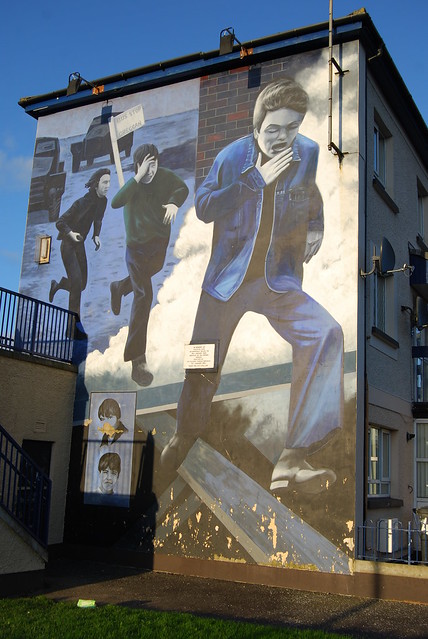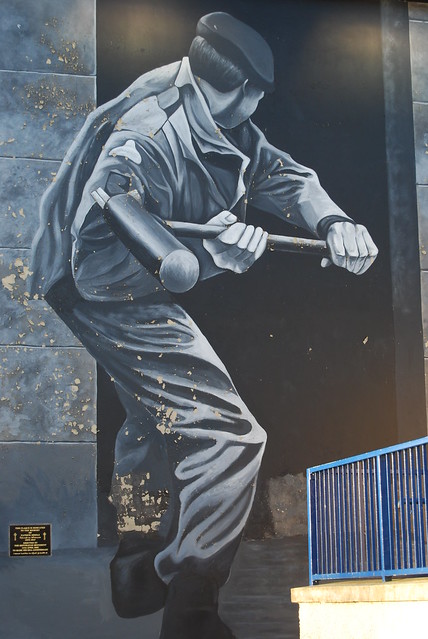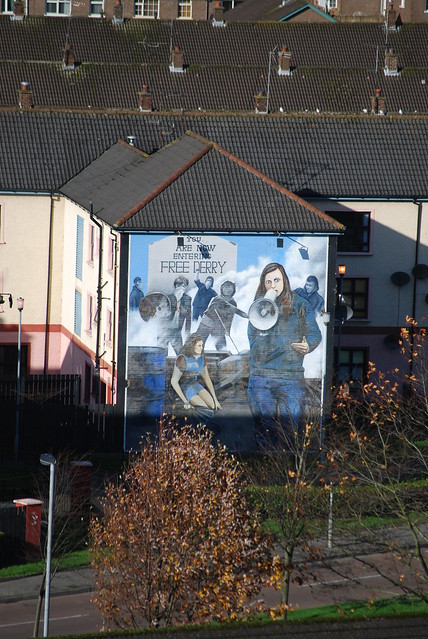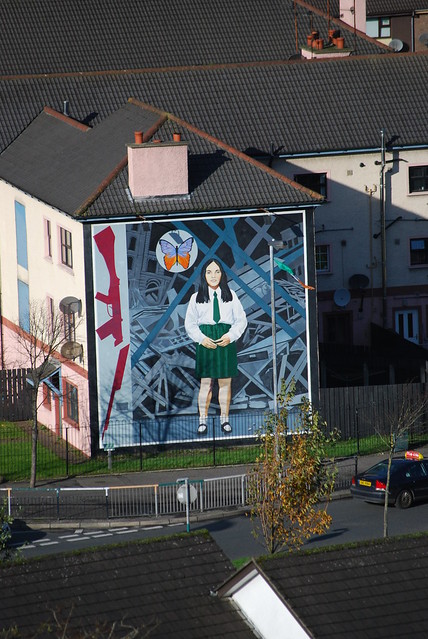Yesterday I took the train from Belfast to Derry/Londonderry. The name of the city itself is contentious. Although it was historically was known as Derry, in the 17th century King William of Orange besieged the city and claimed the northern coast city for England. He subsequently sent hundreds of London craftsman to rebuild and fortify the city adding London prefix to Derry. Since that time, Republicans maintain that the name of the city is Derry while the Unionists consider it Londonderry. To make it easier on everyone a Radio DJ came up with the term Stroke City which refers to Derry (stroke) Londonderry. (Look no further than New Hampshire to see how sensitive the naming is. The town of Londonderry was established just south of Derry in the 19th century).
I will post more pictures about my walk in the coming days but in the meantime it's worth catching up on an event that has become synonymous with the city. A republican majority lives in the area of town known as the Bogside, which is immediately below the city's fortification to the west where the river once surrounded the city walls. As a border city in the west of Northern Ireland, this part of Derry became one of the most passionate Republican areas and a hotbed for IRA recruiting. On January 30th, 1972 a civil rights demonstration descended into hell as British paratroopers were brought in to control the protest from spiraling out of control. Instead, the incident turned into a running battle where 14 civilians were killed, many of which were young men; none of them armed. This watershed moment of the troubles led to major recruitment gains by the Irish Republican Army and similar group who wanted to retaliate.
The following is six sections of a 1992 documentary of Bloody Sunday where members of both parties (Catholic community of Bogside and military personnel) are asked to recall the events. Within the past few years closure has come to the situation in the British Government admitting that none of the demonstrators were armed and that the military overreacted in murder.
Poet Phil Coulter wrote a poem entitled "The Road to Derry" expressing his reaction to the events on Bloody Sunday:
'But when I've returned, how my eyes have burned
To see how a town could be brought to its knees
By the armoured cars and and the bombed-out bars,
And the gas that hangs on to every breeze.
Now an Army's installed by that old Gas-yard wall
And the damned barbed wire gets higher and higher.
With their tanks and their guns, Oh my God, what have they done
To the Town I Loved So Well.'
The area of the Bogside remains politically charged to this day with numerous murals and memorials recalling the atrocities of those years.
 |
| A memorial to the 14 that died on Bloody Sunday |
 |
| Mural capturing a face off between a young man with a rock in his hand standing behind a fence against a British Military vehicle. |
 |
| A memorial of a separate incident when a young man was killed accidentally on the 28th of January 1990 |




No comments:
Post a Comment